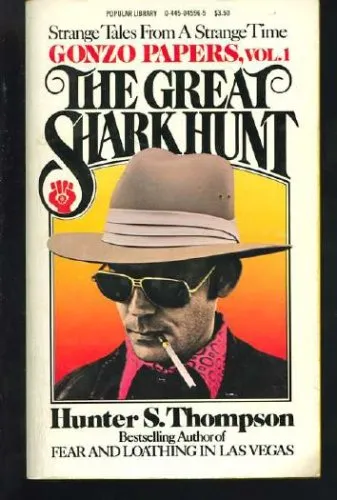Fear and Loathing in Las Vegas: A Savage Journey to the Heart of the American Dream
4.1
Reviews from our users

You Can Ask your questions from this book's AI after Login
Each download or ask from book AI costs 2 points. To earn more free points, please visit the Points Guide Page and complete some valuable actions.Related Refrences:
Introduction to Fear and Loathing in Las Vegas
"Fear and Loathing in Las Vegas: A Savage Journey to the Heart of the American Dream" is a novel by Hunter S. Thompson, with illustrations by Ralph Steadman. It is a masterpiece of Gonzo journalism, written as a first-person narrative by the protagonist, Raoul Duke, Thompson’s alter ego, as he embarks on a bizarre expedition to Las Vegas. The book is a vivid portrayal of the counterculture of the 1960s and paints a haunting picture of American society.
Detailed Summary of the Book
In "Fear and Loathing in Las Vegas," Raoul Duke and his attorney Dr. Gonzo journey to Las Vegas on a weekend trip filled with drug-induced escapades. Initially, they arrive to cover the Mint 400, a motorcycle race in the Mojave Desert. However, their mission quickly devolves into a chaotic exploration of their own depravity and drug-fueled visions. The novel is segmented into two key parts, each documenting different facets of their surreal experiences.
The first part details their drive to Las Vegas, characterized by a medley of mind-altering substances. The pair's misadventures begin at the Mint Hotel, where Duke attempts to report on the race amidst a hallucinatory haze. As the boundaries between reality and delusion blur, the narrative captures the absurdity and excess of the period.
The second part centers on a police convention on narcotics, which ironically serves as a backcloth to their reckless wanderings. Here, Thompson critiques not only the participants' ignorance of drug culture but also reflects on the hypocrisies of American society. The journey spirals further into madness with each outlandish episode, illustrating the distorted quest for the "American Dream" amid a landscape of ruin and disillusionment.
Key Takeaways
- Critique of the American Dream: The book suggests that the ideal of the American Dream is corrupted by greed, excess, and the socio-political climate of the time.
- Surrealism and Reality: The blending of vivid hallucinations with factual events challenges readers to contemplate the nature of reality and perception.
- Cultural Reflection: The novel is a snapshot of the 1960s counterculture, capturing both the freedom and the chaos that arose during this pivotal era in American history.
Famous Quotes from the Book
"We were somewhere around Barstow on the edge of the desert when the drugs began to take hold."
"The tendency is to push it as far as you can."
"He who makes a beast of himself gets rid of the pain of being a man."
Why This Book Matters
"Fear and Loathing in Las Vegas" holds significant cultural relevance as it acts as a time capsule of 1960s America, capturing the spirit of an era marked by rebellion, experimentation, and change. Hunter S. Thompson's unique style—Gonzo journalism—broke traditional barriers of objective reporting, blending fact with hyperbolized fiction to convey deeper truths. The book’s lasting impact stems from its unflinching scrutiny of the American socio-political landscape and the hollow pursuit of success tainted by superficiality. It remains a poignant commentary on the pursuit of the elusive "American Dream" and a compelling read for those willing to venture into the depths of its chaotic tale.
Free Direct Download
You Can Download this book after Login
Accessing books through legal platforms and public libraries not only supports the rights of authors and publishers but also contributes to the sustainability of reading culture. Before downloading, please take a moment to consider these options.
Find this book on other platforms:
WorldCat helps you find books in libraries worldwide.
See ratings, reviews, and discussions on Goodreads.
Find and buy rare or used books on AbeBooks.
1359
بازدید4.1
امتیاز50
نظر98%
رضایتReviews:
4.1
Based on 0 users review
"کیفیت چاپ عالی بود، خیلی راضیام"
Questions & Answers
Ask questions about this book or help others by answering
No questions yet. Be the first to ask!




